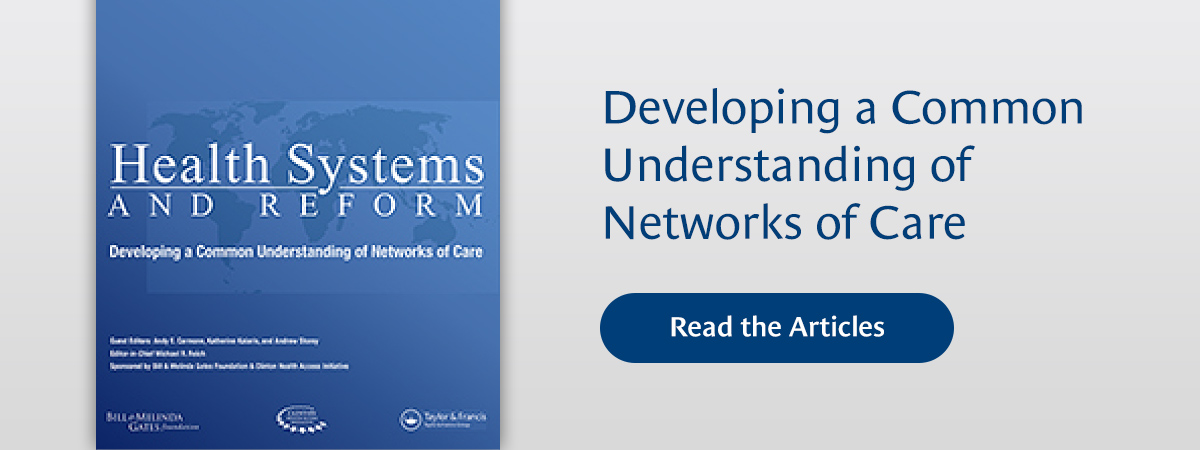A collection of articles about the essential but often inactive or fragmented networks that connect patients to care in low- and middle-income countries is out now in a special issue of Health Systems & Reform Journal. CHAI and The Bill & Melinda Gates Foundation, together with policy and implementation experts, put it together to develop a common understanding and vocabulary for Networks of Care.
New term for a familiar concept
All clinical care is conducted in the context of a network, whether among doctors and nurses at the same hospital, or vertically among facilities at different levels of care. When functioning well, these networks address critical gaps in the delivery of health services in the public and private sector by connecting the entire health system – from the home to the hospital – ensuring every patient has access to the good quality care they need, when and where they need it.
Too often in low- and middle-income countries, networks that are supposed to connect health services are disjointed and difficult to access, leading to poor quality of care and ultimately to preventable suffering and even death for patients.
Networks of Care save lives
Maternal and newborn service delivery provides excellent examples of the capabilities of an effective healthcare network. In Northern Nigeria CHAI implemented an integrated maternal, newborn, and reproductive health program across three states, covering a population of about 10 million people. Within 12 months of implementation, neonatal deaths dropped by 43 percent, maternal deaths by 37 percent and stillbirths by 15 percent. Progress has been sustained and continued since.
With an implementation-focused framework that names, defines, and shares examples of Networks of Care that are working well, the global health community can adjust planning and activities to improve health systems efficiency and patient outcomes in the communities they serve.
Special issue: Developing a Common Understanding of Networks Of Care
- The Water in Which We Are Swimming: Introduction to the Special Issue: Developing a Common Understanding of Networks of Care.
- Developing a Common Understanding of Networks of Care through a Scoping Study.
- Seeing the Forest for the Trees: A Set of Descriptive Case Studies Presented with the Networks of Care Framework (Introduction to the Case Studies).
- Harnessing the Power of Networks of Care for Universal Health Coverage.
Case Studies:
- Building Trust to Save Lives in a Metro Manila Public-Private Network of Care: A Descriptive Case Study of Quirino Recognized Partners in Quezon City, Philippines.
- The Logarithmic Spiral of Networks of Care for Expectant Families in Rural Nepal: A Descriptive Case Study.
- Averting Maternal Death and Disability in an Urban Network of Care in Dar es Salaam, Tanzania: A Descriptive Case Study.
- Applying a Client-Centered Approach to Maternal and Neonatal Networks of Care: Case Studies from Urban and Rural Nigeria.
- Networks of Care in Rural Madagascar for Achieving Universal Health Coverage in Ifanadiana District.






